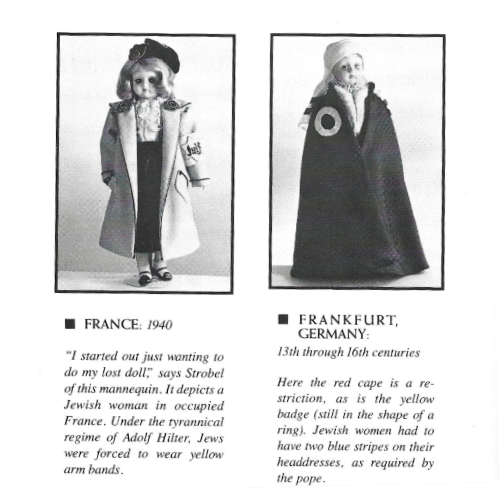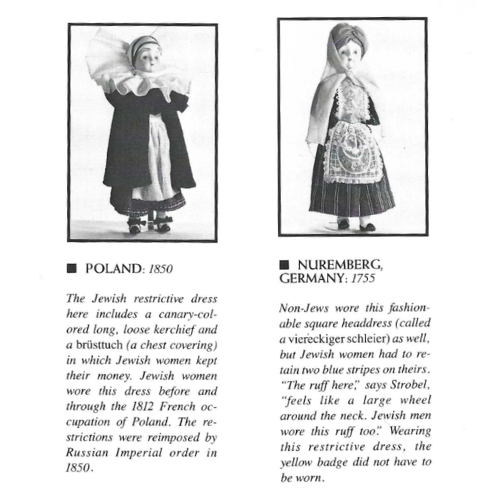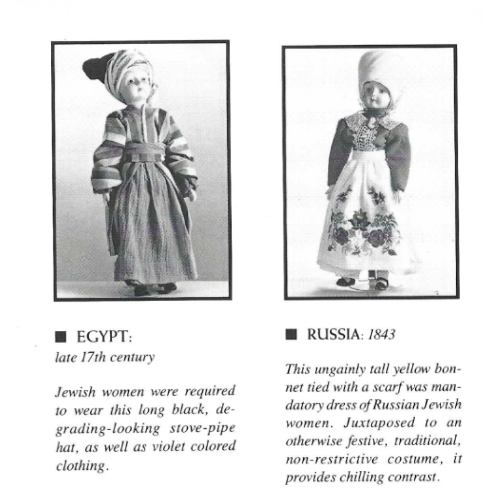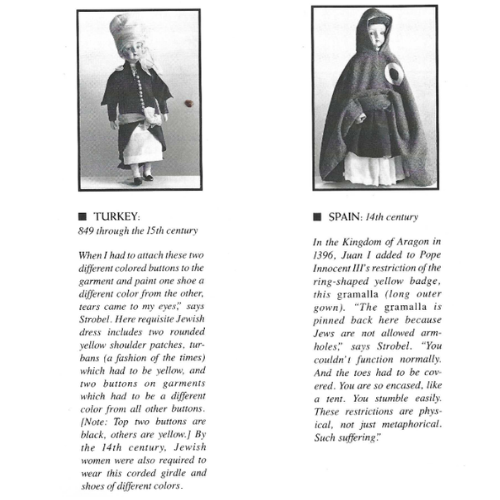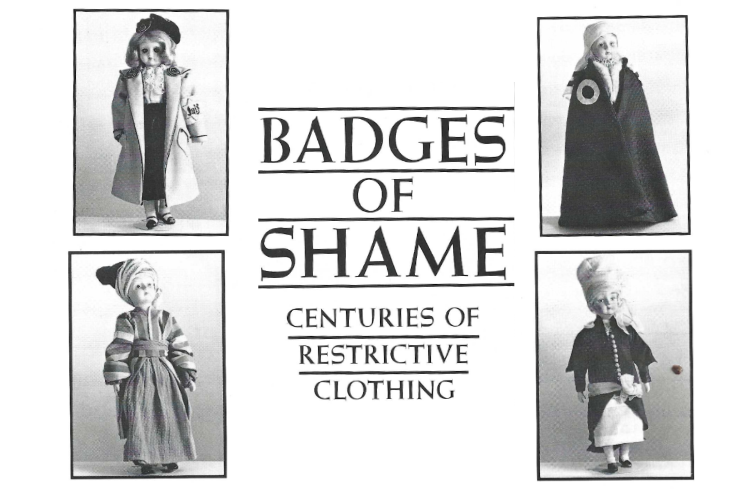
Badges of Shame
“As a four-year-old in Russia, I had few comforts and playthings,” says Trudie Strobel. “My prize I possession was a beautiful bisque doll and I still remember the horror of it being torn away from me by a brutal Nazi guard on the transport to the camps.”
More than 45 years later in California and in therapy with Dr. Robert Solow, Strobel — who had worked clenchingly not to remember things —began to risk the art of remembering.
“I suddenly recalled, besides the horrors and the tormentors, that I had learned my first embroidery stitches from my beloved mother when I was just a little girl” says Strobel. In a stroke of therapeutic genius, Solow and Strobel decided that she would recreate her childhood doll. “I started out just with the desire to do my lost doll.” says Strobel. “But I wanted to dress her the way I had remembered women were forced to dress by the Nazis. As I stitched and crocheted, I found I was helped to want to live again, to live with my physical and spiritual pain, to look at a book again.
“I became fascinated with an entire subject —the history of restrictive Jewish women’s clothing. I discovered that beyond the “Yellow Badges of Shame” that I remembered from my pre-school years, there existed over a millenium of restricted Jewish dress.”
Within the next year, Strobel completed eleven dolls —now a permanent collection of the Martyrs Memorial and Museum of the Holocaust in Los Angeles. “Every stitch I made” says Strobel, “I thought I was stitching up the Jewish people a little. This doll from Turkey was the most painful for me. When I had to attach these two different colored buttons on the garment and paint one shoe a different color from the other, I cried. It wasn’t enough that we had to wear yellow turbans, two yellow badges, a yellow girdle —the degradation went down to the shoes —two different colored shoes. As I created these figures, I felt I was in each century, I was each of these women; I was numb.”
Strobel wended her way from the personally therapeutic — from the cathartic touching over and over of her own dark private wounds —to the collectively redemptive. The fact that the Martyrs Museum uses her exhibit as a teaching tool in school programs is deeply meaningful to her.
Looking closely at these fragile, silent, beautiful dolls, one is startlingly moved by the fastidiousness of Strobel’s reproductions, as well as by her extraordinary craftsmanship. Strobel is versatile: she does needlepoint, she crochets, she makes her own lace, she embroiders, she tats, she sews, she even weaves her own cloth. In making these figures, Strobel used exclusively natural fibers, authentic to each time period.
When asked about this devout, almost votive fidelity, she responds, “I wanted to do these figures as if this is a little person, you see. So I was scrupulous even in the undergarments. I checked the Jewish sumptuary laws —for example, you were only allowed to use limited amounts of lace. And putting a little embroidery on a slip, I felt, well, this is me, Trudie; this is something I would do.
“Can we really understand what these garments felt like to wear? The ruff, the flieder (headdress), the viereckiger schleier (square veil)? I felt at times that I was suffering for all of us through the ages. But when I look at each of these creations now I say, ‘Oh you beautiful, beautiful Jewess! Look how pretty you are! Even though you have to wear all this heavy equipment.’ We prevailed even with these handicaps, and I prevailed in making these figures attractive.”
After the completion of this project, Strobel in a sense began to shed her own restrictive dress. She felt sufficiently girded and adorned to toast herself with more festive, celebratory themes. Her latest project, a virtuosic tapestry called “Women of Accomplishment,” portrays Jewish women from Biblical times through Anna Rosenberg (former assistant secretary of defense under Franklin D. Roosevelt) and Hannah Senesh.
It is impossible to do justice, in these few paragraphs and photographs, to Trudie and this small, triumphant task of hers. These dolls sear one in their simplicity and innocence, in their horror and depth of meaning. Trudie has breathed a bit of her soul into each creation. May this new year heal us, too.

